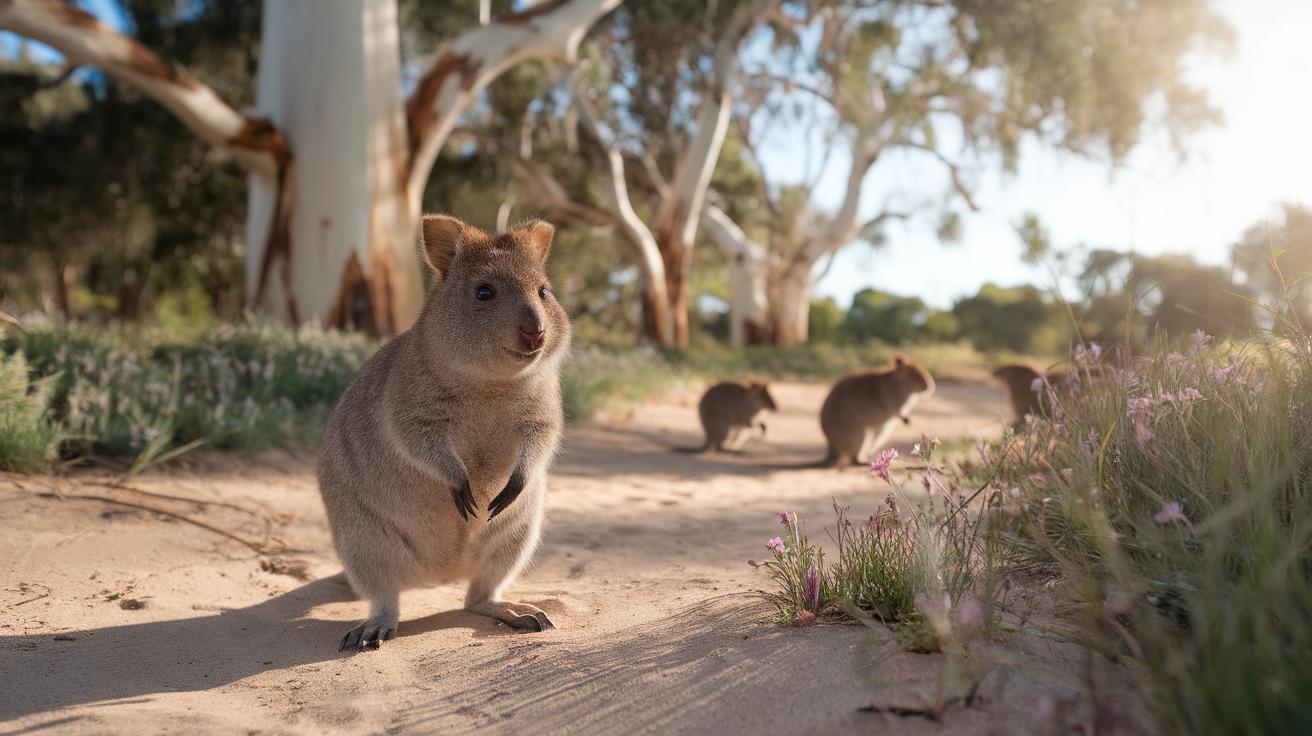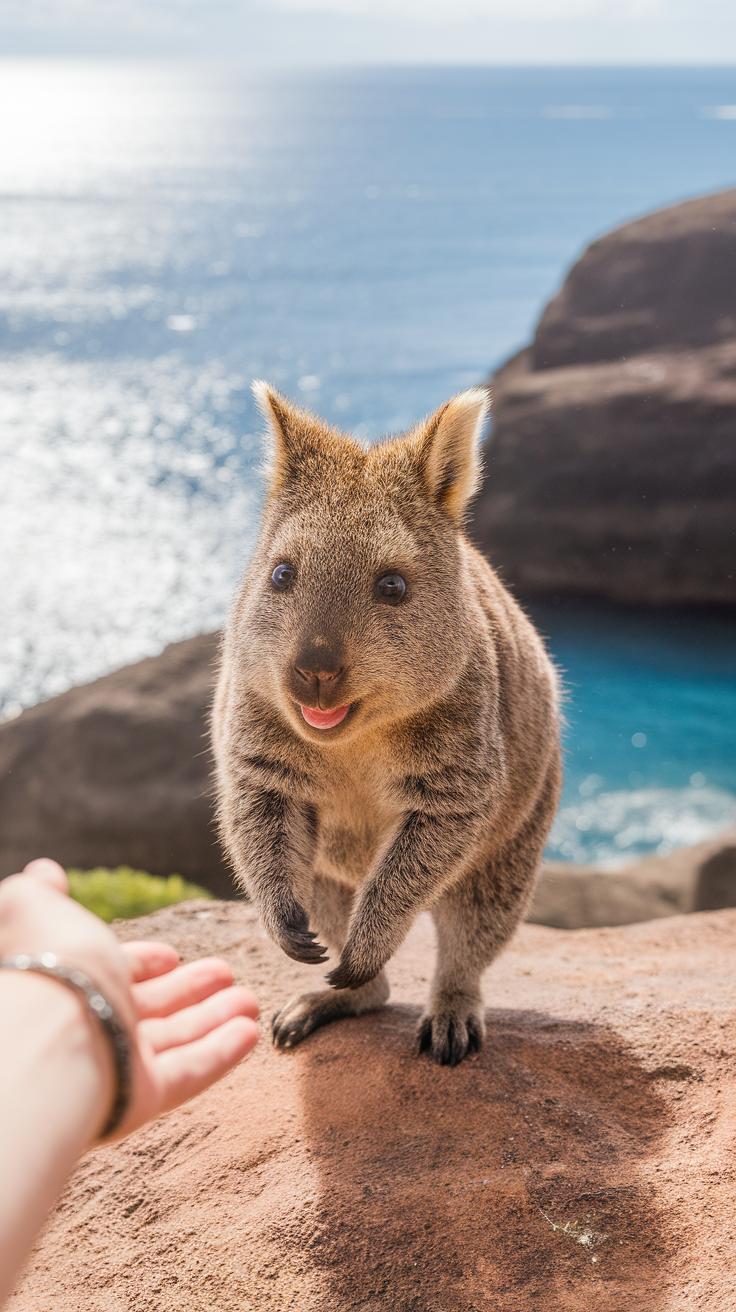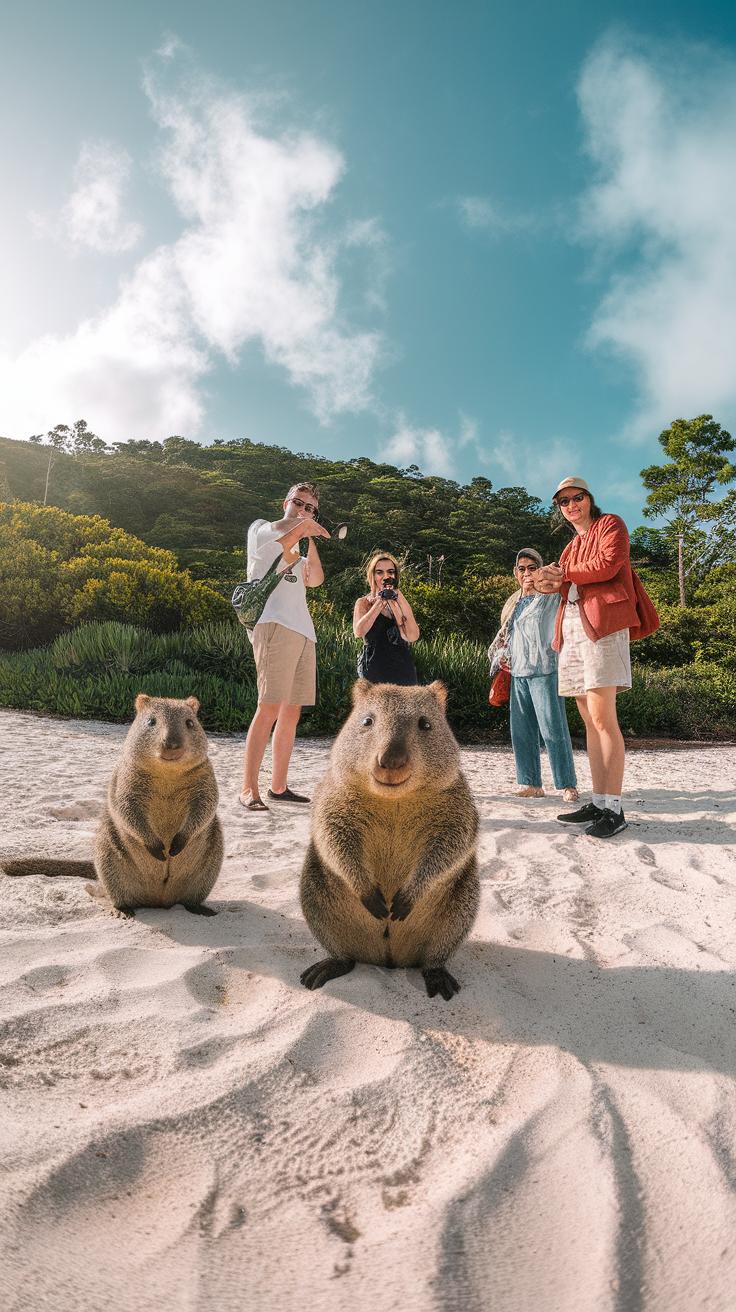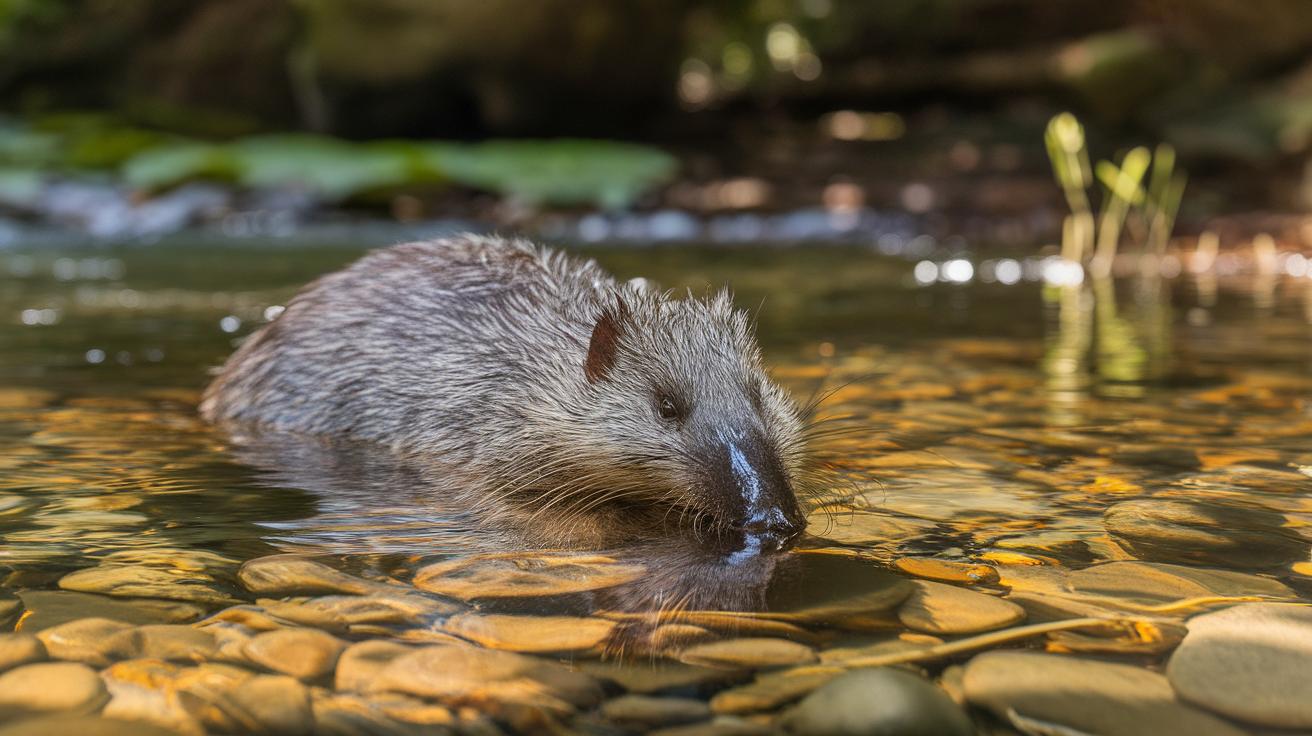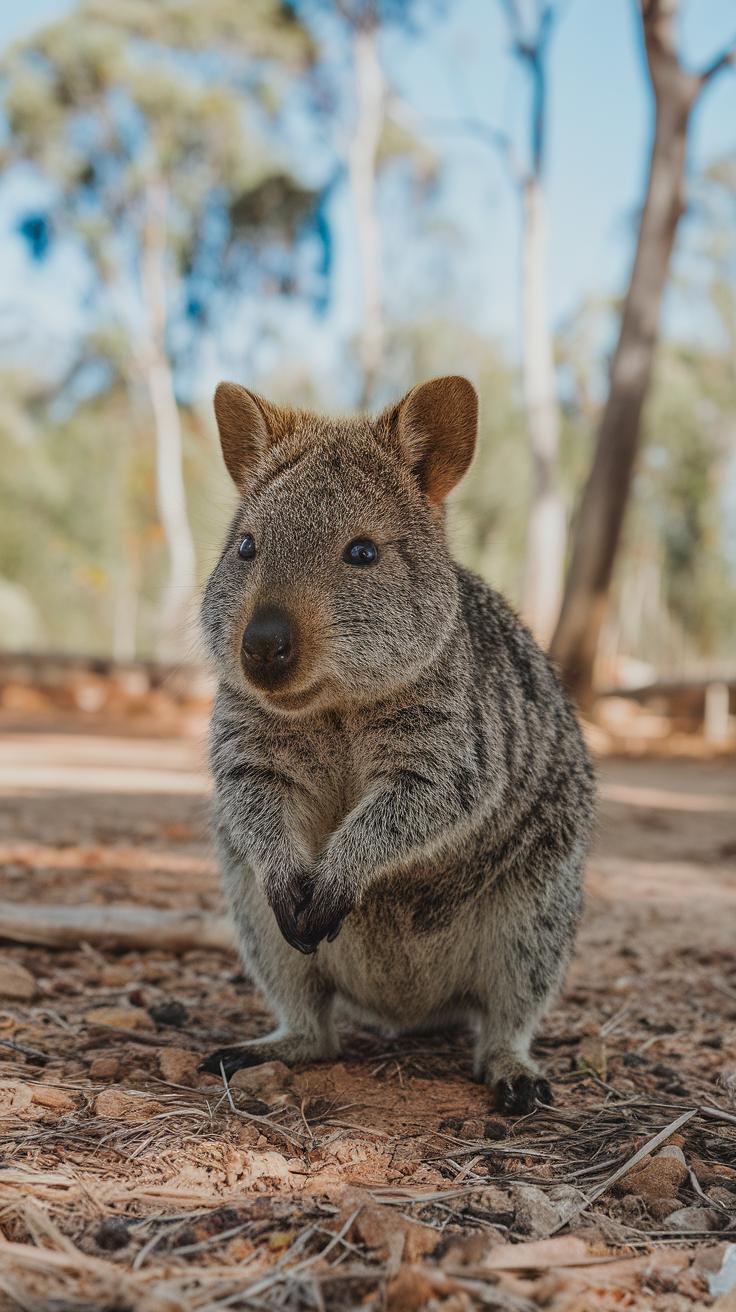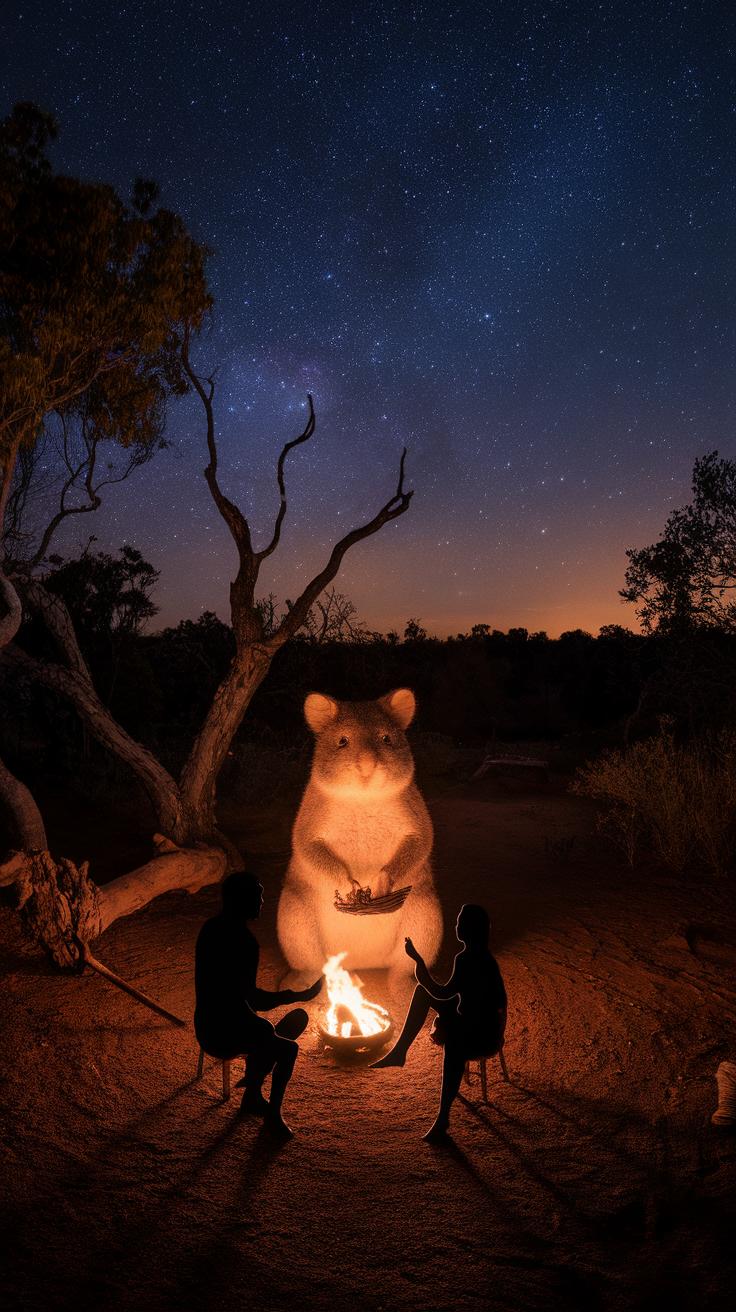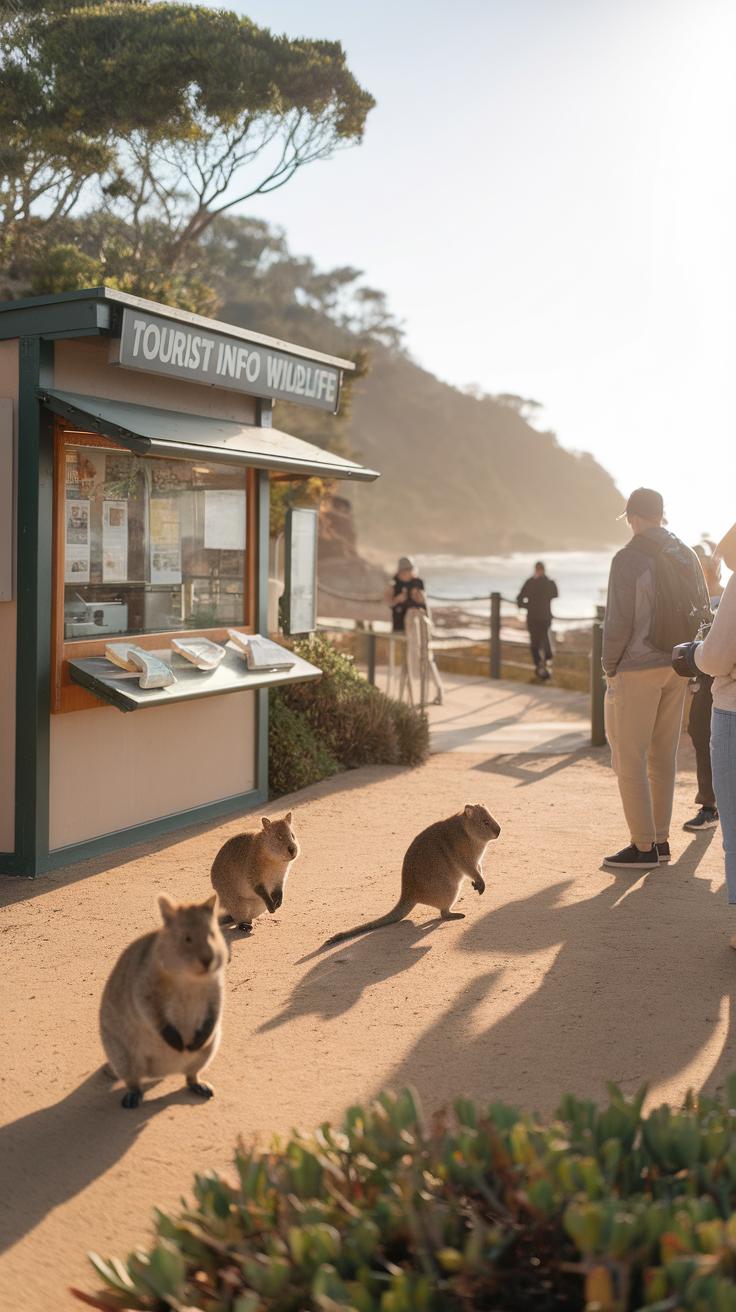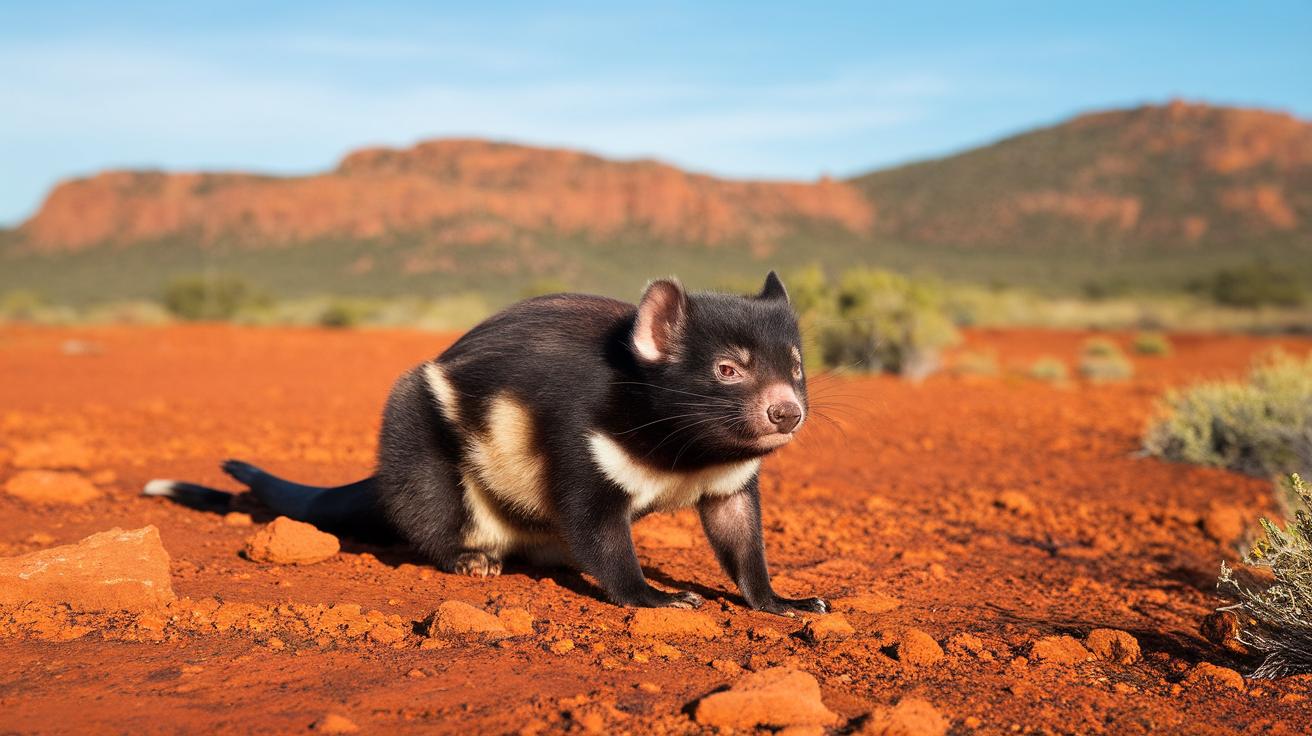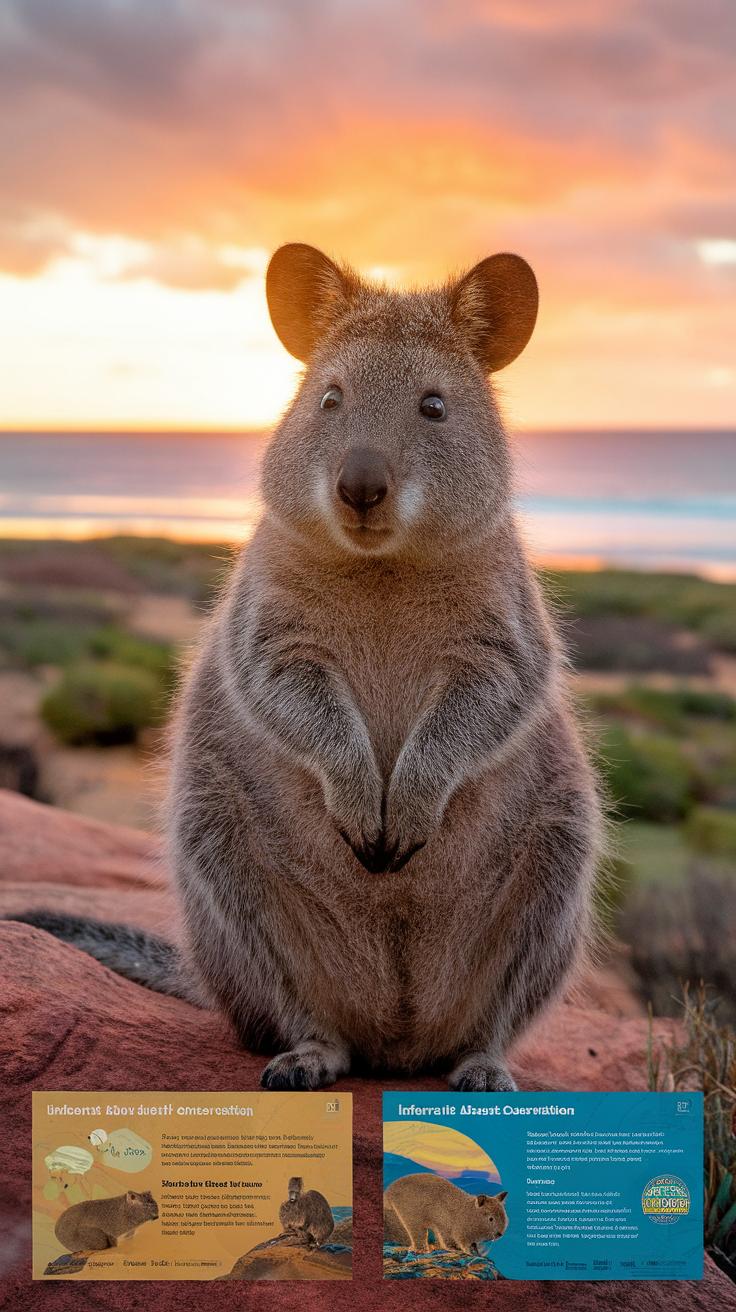Introduction
The quokka is a small, herbivorous marsupial native to the coastal regions of southwestern Australia, notably thriving on Rottnest Island. Known for their amiable nature and adorable appearances, these creatures are often referred to as the “world’s happiest animals.” The fascination surrounding quokkas has grown significantly, with many people seeking out opportunities to encounter them in their natural habitat. Through stunning photographs and heartwarming stories, the connection between humans and quokkas profoundly enriches our appreciation for wildlife.
This article delves into the various aspects of quokka animal encounters, exploring their unique behaviors, habitat preferences, and the joy they bring to visitors. These charming animals not only contribute to a vibrant ecosystem but also serve as ambassadors for wildlife conservation efforts. By understanding their lifestyle and habitat, we can enhance our encounters with them while promoting their protection for future generations.
The Quokka A Brief Overview
The quokka, a charming small marsupial, is known for its exceptionally cute appearance and friendly demeanor. Classified under the scientific name Setonix brachyurus, this delightful animal belongs to the macropod family, which also includes kangaroos and wallabies. Adult quokkas typically weigh between 2.5 to 5 kilograms and measure approximately 40 to 54 centimeters in length, with a tail that contributes an additional 25 to 30 centimeters.
Primarily found on the smaller islands off the coast of Western Australia, such as Rottnest Island, the quokka thrives in coastal scrub and woodlands. These habitats provide ample food sources, including grasses and leaves, and shelter from predators. Their sociable nature often leads them to interact with humans, further enhancing their endearing reputation. Meeting a quokka can be a memorable experience, as their natural curiosity and friendly behavior invite visitors into their world.
The Connection Between Humans and Quokkas
Growing Interactions and the Role of Social Media
Quokkas have increasingly become a symbol of joy and connection between humans and wildlife, particularly on the picturesque Rottnest Island. As visitors flock to experience these charming marsupials up close, the interactions often lead to unforgettable moments that resonate well beyond the immediate experience. These encounters, characterized by the quokka’s friendly demeanor, invite smiles and laughter, creating a sense of shared happiness.
Social media plays a pivotal role in amplifying the delight surrounding quokka encounters. Photos and videos of visitors posing with these adorable creatures quickly spread across platforms, garnering widespread attention. This visual representation cultivates a growing curiosity and fascination, drawing more nature enthusiasts to witness the quokka charm first-hand. The hashtags related to these interactions serve to inspire others to engage with quokkas, promoting not only interaction but also conservation awareness, as more people recognize the importance of protecting these lovable animals and their habitat.
Encounters What to Expect from Quokka Animal Encounters
Types of Quokka Encounters on Rottnest Island
Meeting a quokka in its natural habitat offers a delightful experience that can vary from organized wildlife tours to spontaneous encounters while strolling through Rottnest Island. Wildlife tours generally provide guided experiences where knowledgeable guides share insights into the quokka’s habitat, diet, and social behaviors, enhancing the encounter with a deeper understanding of these charming animals. Participants often have opportunities to take photographs while learning about conservation efforts aimed at preserving quokkas.
On the flip side, casual meet-ups can happen at any moment. As quokkas roam freely across the island, visitors often find themselves face-to-face with these adorable creatures. With their friendly demeanor and curious nature, quokkas may come close, inviting gentle interactions. These unscripted moments create lasting memories, making each encounter unique and heartwarming. Regardless of the setting, the chance to engage with quokkas is an experience that resonates with many, fostering a deeper appreciation for wildlife.
The Behavior of Quokkas Social Interactions and Feeding Habits
Social Interactions and Nocturnal Activities
Quokkas are known for their endearing social behaviors, often forming small groups that enhance their communal existence. These friendly marsupials engage in playful antics with one another, showcasing a high degree of social bonding. Grooming is a common practice, where they help each other maintain clean fur, which strengthens their relationships. Most active during the cooler hours of dusk and dawn, quokkas exhibit nocturnal tendencies. This is when they venture out to forage for food, primarily consisting of grasses, leaves, and fruits. The twilight hours are crucial for their survival, allowing them to evade daytime predators while enjoying a feast of fresh vegetation.
Feeding Habits and Group Dynamics
Quokkas display unique feeding habits that reveal their adaptability in a variety of environments. Grazing in small circles, they share food resources, which fosters cooperation within their groups. This behavior not only enhances their ability to find nourishment but also strengthens their social connections. Quokkas have a particular affinity for certain plants, often returning to preferred feeding locations multiple times. Observing their interactions while they munch on leaves can be heartwarming, particularly as they often appear to smile, inviting a deeper emotional connection with onlookers. Their playful and inquisitive nature during these feeding times makes every encounter memorable.
Challenges Faced by Quokkas Threats to their Populations
Habitat Loss and Predation
The survival of quokkas is increasingly threatened by various challenges in their natural environment. Urbanization significantly contributes to habitat loss, as human activities lead to the destruction of the native bushland that quokkas rely on for shelter and food. As their habitats shrink, quokkas often become more vulnerable to predators. Invasive species such as foxes and feral cats have found their way into the quokka’s territory, targeting them as easy prey. This predation pressure, compounded by limited escape routes due to lost habitats, creates a precarious situation for these lovable marsupials.
Conservation Efforts for Quokkas Protecting Their Habitat and Future
Engaging Organizations and Strategies
Protection of quokkas is paramount, given their vulnerable status. Several dedicated organizations are at the forefront of conservation efforts aimed at ensuring the survival of these charismatic marsupials. The Australian government, alongside non-profit groups such as the Quokka Recovery Program, has implemented strategies that focus on habitat restoration, predator control, and community engagement. Through initiatives like habitat fencing and monitoring programs, these organizations work diligently to bolster quokka populations while protecting their surrounding ecosystems.
Community Involvement and Education
Conservation extends beyond organizational efforts; educating locals and tourists about quokkas plays a significant role. Interactive workshops and eco-tours promote responsible wildlife encounters, which help reduce human impact on their habitats. Engaging the community fosters a sense of stewardship, ensuring that the joy of meeting quokkas continues for generations. By raising awareness of their needs and the challenges they face, conservation efforts garner support, and advocates emerge to protect these endearing creatures in their native environment.
Quokkas in Mythology and Folklore
The Significance of Quokkas in Local Aboriginal Myths
In Aboriginal culture, quokkas hold a special place, often representing joy and connection to the land. Indigenous stories depict these creatures as symbols of resilience and harmony within the ecosystem. Local tribes refer to quokkas as “sister,” showcasing the deep respect they held for this animal. The animal’s friendly demeanor and approachable nature have inspired many tales passed down through generations, often emphasizing themes of kindness and community.
Quokkas in Storytelling Traditions
Storytelling involving quokkas often includes various moral lessons or reflections on human behavior. These narratives highlight the balance between humans and wildlife, illustrating the importance of coexisting peacefully. Additionally, the quokka’s playful antics provide a source of inspiration for art, dance, and music in Aboriginal traditions, recognizing their vital role in the cultural tapestry of the region. Understanding these stories can deepen visitors’ appreciation for the quokka, making animal encounters all the more meaningful.
Planning Your Quokka Encounter Responsible Tourism Tips
Essential Guidelines for Quokka Encounters
Meeting quokkas in their natural habitat can be an unforgettable experience, but it is vital to approach this adventure with respect and care. Visitors should plan their excursions to protect the quokka’s wellbeing and preserve their environment. Always maintain a safe distance; quokkas are wild animals and can become stressed or hostile if approached too closely. Using a zoom lens for photography helps capture the moment without intrusion.
Feeding wild quokkas is discouraged, as it can disrupt their natural eating habits and lead to reliance on human food. Instead, consider using your time to observe their behavior in a relaxed manner. To further enhance your encounter, visit during early morning or late afternoon when quokkas are most active. These practices not only benefit the quokkas but also enrich your experience, fostering a deeper connection with nature.
Documenting Your Quokka Encounter Capturing Heartwarming Moments
Share Your Joy Through Photos and Stories
Documenting your quokka encounters is an opportunity to capture the heartwarming memories made during your visit. Use natural light to your advantage, as quokkas are most active during early mornings and late afternoons, providing the perfect backdrop for those enchanting photos. Candid shots that showcase their playful nature will bring your stories to life. Remember to respect their space; approach them calmly and avoid using flash photography, which can startle these friendly creatures.
After your encounter, consider sharing your experiences responsibly. Craft engaging stories that celebrate the joy of meeting quokkas, while emphasizing the importance of wildlife conservation. Use social media platforms to connect with fellow enthusiasts, but ensure you promote respectful behavior towards their environment. Your documentation can inspire others to appreciate these lovable marsupials and the habitat they call home.
The Lasting Impact of Quokka Encounters A Heartfelt Perspective on Wildlife Conservation
Connecting Hearts and Minds Through Quokka Encounters
Encounters with quokkas create unforgettable memories that linger long after the moment has passed. Their expressive eyes and friendly demeanor serve as ambassadors for wildlife, stirring feelings of joy and empathy in people who meet them. This emotional connection often inspires visitors to advocate for wildlife conservation, understanding the delicate balance of ecosystems that nurture such charming creatures. By witnessing a quokka’s joyful interactions, individuals cultivate a sense of responsibility towards protecting their habitats and natural environments.
Influencing Attitudes Towards Conservation
Experiencing quokkas in their native habitat transforms how people perceive conservation efforts. This interaction becomes a catalyst for change, encouraging community involvement and support for environmental initiatives. Conversations sparked by these encounters further raise awareness of the importance of ecological preservation, reinforcing the idea that every creature plays an integral role in the health of our planet. Thus, quokkas not only warm hearts but also ignite a passion for protecting wildlife, fostering a generation of conservation advocates dedicated to ensuring the survival of these enchanting animals and their ecosystems.
Conclusions
Quokkas represent more than just an adorable face; they play a crucial role in the ecosystems of their native territories. As visitors explore the beauty of their habitats, they forge unforgettable memories that underscore the importance of coexisting with wildlife. The heartwarming interactions with quokkas serve as an inspiring reminder of the joys of nature and the bonds that can be formed between species.
As we continue to cherish and protect these delightful creatures, it is essential to advocate for sustainable practices that ensure their prosperity. Quokka encounters inspire us to appreciate our connection to the natural world, prompting us to act in ways that support the conservation of all wildlife. Every visit, every picture, and every smile brings us closer to understanding and safeguarding these remarkable animals.

